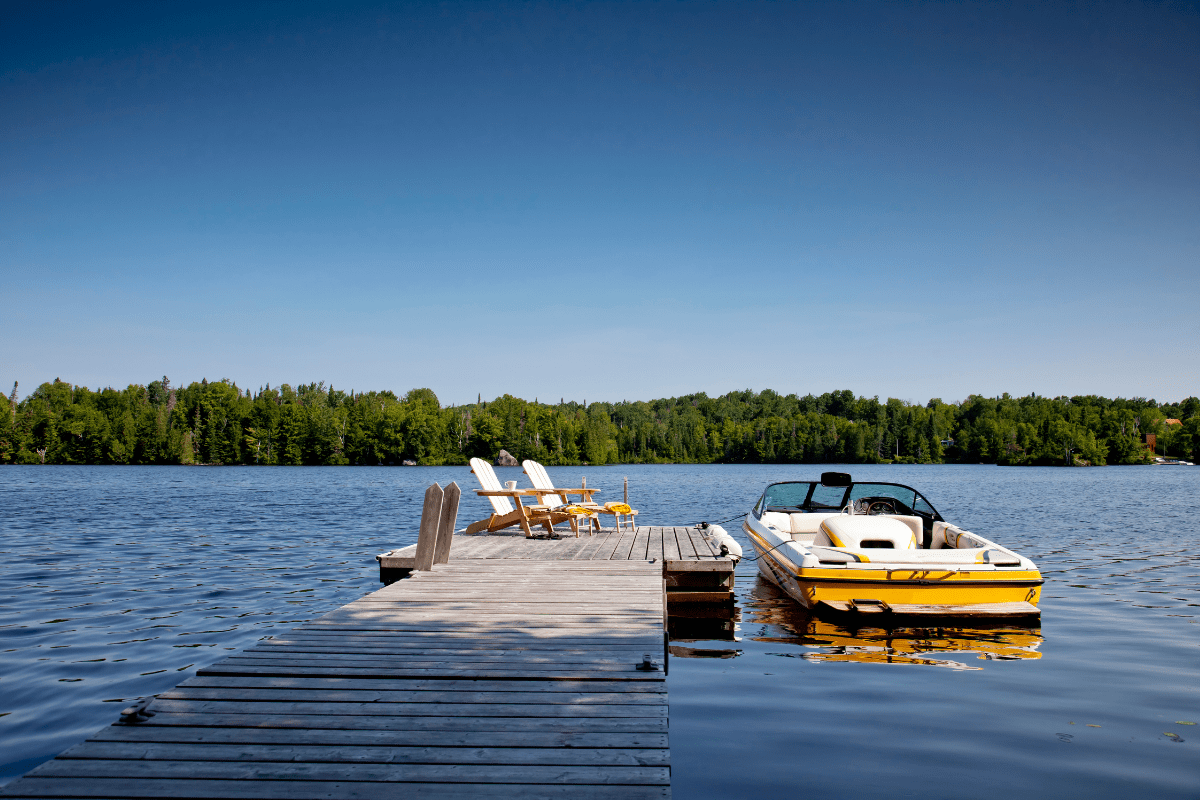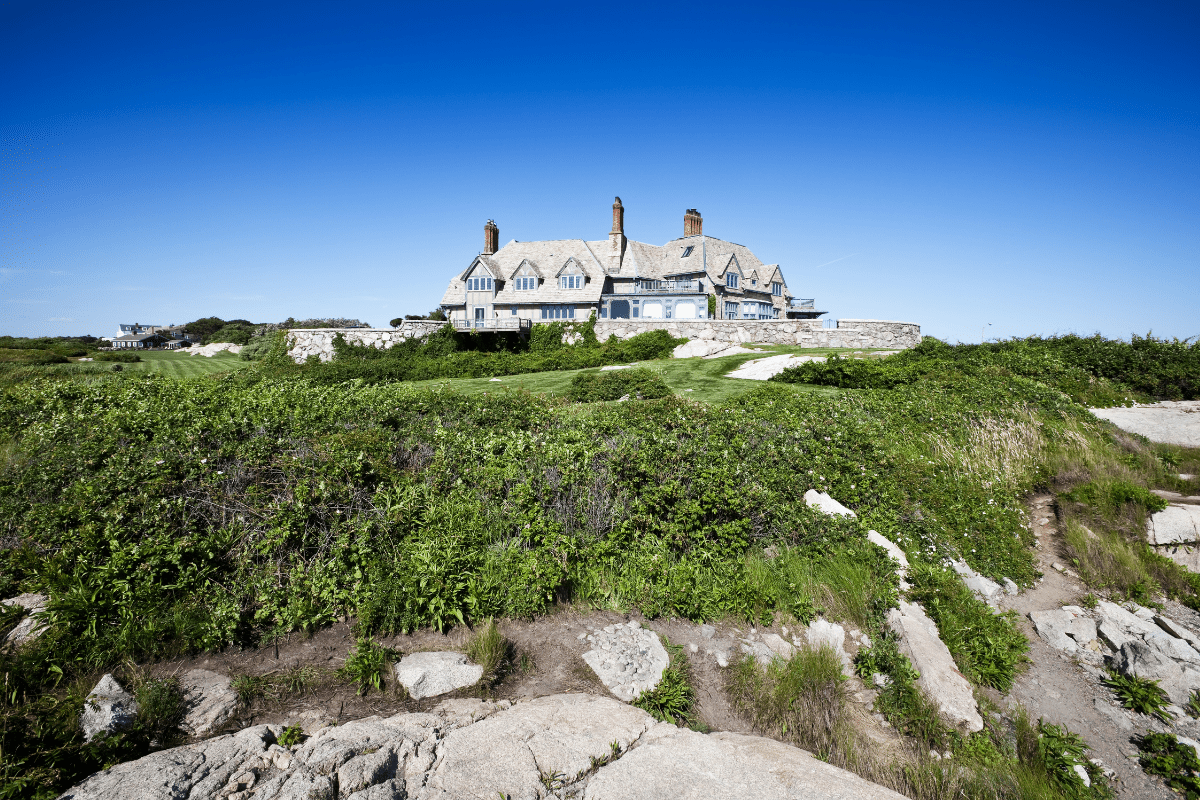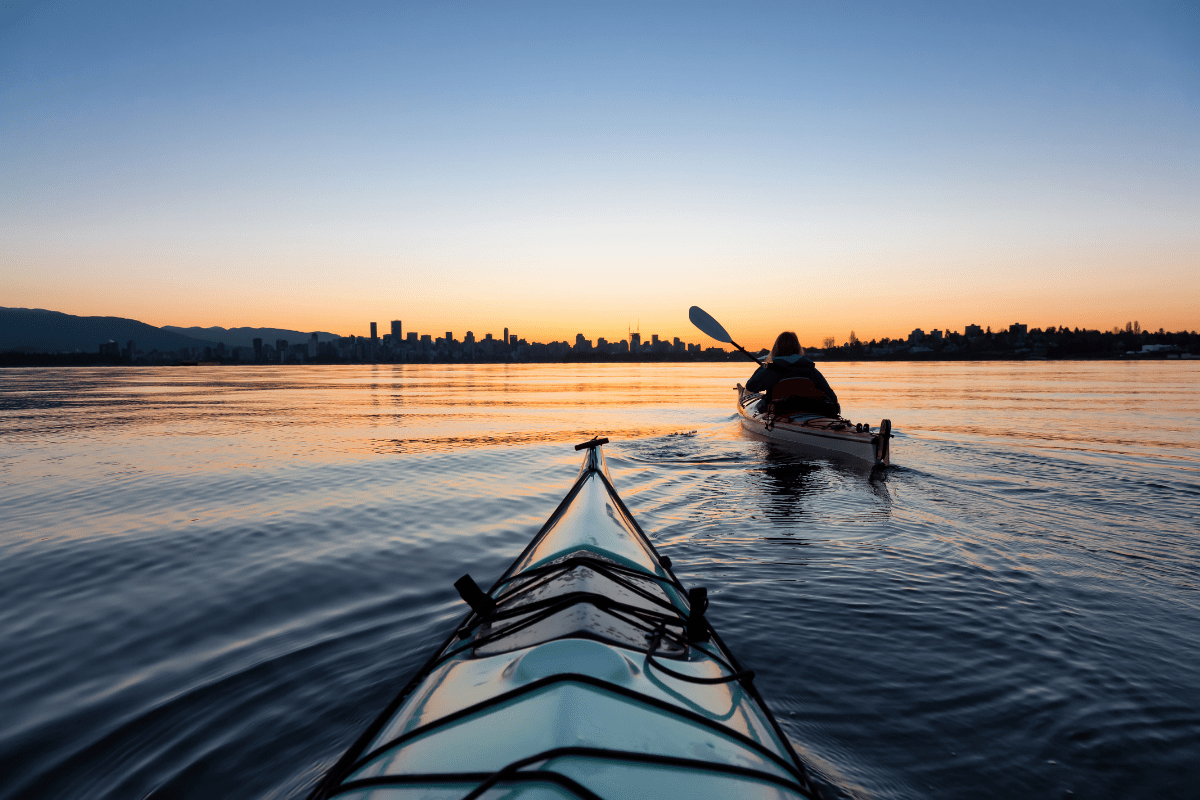Rhode Island might be America's smallest state, but don't let that fool you into thinking the fishing is equally diminutive. With 400 miles of coastline and over 100 freshwater bodies packed into its borders, the Ocean State punches way above its weight class when it comes to angling opportunities.
Why Rhode Island fishing surprises everyone
Here's the thing about fishing in Rhode Island… it's kind of ridiculous how good it is. You can literally catch trophy striped bass at dawn, grab breakfast in Newport, then be pulling largemouth bass from a pristine pond by lunch. The state's compact size becomes its greatest strength, letting you hop between world-class fishing spots faster than you can retie a Palomar knot.
The diversity really hits you when you realize August brings together false albacore, bonito, bluefish, and stripers all at once. It's like nature decided to throw a fish party and forgot to limit the guest list. Meanwhile, winter anglers are pulling 40-inch stripers from under bridges in downtown Providence while everyone else thinks the season's over. Talk about keeping secrets.
What really sets Rhode Island apart is how accessible everything feels. Sure, Block Island draws crowds for good reason, but you'll also find hidden gems where three-foot-deep water holds monster blues in May. The state manages its resources well too, with regular stocking programs and smart regulations that keep the fishing sustainable without making you feel like you need a law degree to understand the rules.
Block Island: The offshore giant
Getting to the promised land
Block Island sits 13 miles southeast of Point Judith, and getting there is half the adventure. You can take the ferry from Narragansett if you're shore-bound, but most serious anglers trailer their boats to Galilee and make the run. Fair warning: the crossing can get sporty when the wind kicks up, so check the forecast unless you enjoy redistributing your breakfast to the seagulls.
The island itself offers two main harbors for visiting boats. Great Salt Pond provides the most protection and amenities, while Old Harbor puts you closer to town but offers less shelter. Both have fuel, ice, and bait, though prices reflect the island premium… think airport food pricing but with fish hooks.
Where the magic happens
Let me share some GPS coordinates that'll change your fishing life:
- Southeast Corner: 41-08-49.8/71-32-58.4
- The Pinnacle: 41-07-25.8/71-33-52.8
- Northeast Corner: 41-09-34.0/71-32-06.9
- North Rip: Just follow the boats
- Southwest Corner: Where dreams come true
The Southeast Corner gets all the press, and yeah, it's phenomenal. But here's a pro tip: when everyone's stacked up there, slide over to the Northeast Corner during moving water. The fish still show up, but you might actually have room to fight them without playing bumper boats.
Tactics that actually work
Live eels rule the night shift around Block Island, especially at the North Rip and Southwest Corner. I know, I know… eels are slimy and weird and make you question your life choices at 2 AM. But trophy stripers don't care about your feelings, and neither should you when there's a 50-pounder on the line.
During daylight, the game changes completely. Wire line trolling with umbrella rigs covers water efficiently, while jigging produces when you mark fish on the sounder. The key is finding moving water, preferably on the flood tide. Block Island stripers are opportunistic feeders, but they're not stupid… they position themselves where the current delivers room service.
For shore-bound anglers, Snake Hole (officially Vaill Beach) and Southwest Point offer legitimate shots at quality fish. Pack light though, because the walks can be brutal with full surf gear. Swimming plugs and bucktails work the rocky structure effectively, especially when peanut bunker are around.
Narragansett Bay: Your new home waters
Point Judith and the Harbor of Refuge
Point Judith's Harbor of Refuge might be the most underrated fishing spot in New England. The breakwalls create perfect ambush points for stripers and blues, while the center wall offers three miles of prime structure. Park at the state lot (Corner of Galilee Road and Great Island Road) and you've got access to both boat ramps and excellent shore fishing.
The secret here is timing. First and last light produce savage blitzes when conditions align. Live bunker or fresh chunks fished on the bottom work year-round, but when the fish are up top, nothing beats walking a pencil popper along the rocks. Just remember: this spot lags about an hour behind Newport tide charts, so plan accordingly.
Summer brings an incredible variety of species. Besides the usual suspects, you'll find fluke, black sea bass, scup, and even the occasional bonito. The Camp Cronin fishing area stays productive even when the tourist hordes descend, mainly because most visitors don't wake up at 4:30 AM for the dawn bite.
Newport's sneaky good spots
Newport gets pigeonholed as a sailing and mansion town, but the fishing access surprises newcomers. Fort Adams State Park offers a concrete boat ramp with three-foot depth at mean low water, plus shore fishing along the rocks. The best part? Parking's actually reasonable, which is like finding a unicorn in Newport during summer.
The Goat Island Causeway provides curbside fishing that produces shocking results. I've watched tourists in flip-flops outfish boats simply because they stumbled onto the right tide. The Newport Bridge creates upwelling currents that stack baitfish, and where bait goes, gamefish follow. Night fishing here with soft plastics can be magical when the squid show up.
Brenton Point State Park delivers classic New England surf fishing, complete with slippery rocks and the occasional rogue wave. It's not for beginners, but experienced surfcasters find solitude and quality fish. The rocky structure extends underwater, creating perfect hunting grounds for stripers cruising the coastline.
Hidden gems in the bay
Want to know where locals actually fish? Try these spots:
- Colt State Park in Bristol
- Rocky Point's new fishing pier
- Beavertail State Park on Jamestown
- Sakonnet River for tautog
- Warwick City Park's fishing platform
Beavertail State Park (GPS: 41-27-06N/71-24-06W) stands out for its dramatic setting and consistent action. Diamond jigs and bucktails produce when fish pin bait against the boulders. Dawn and dusk fishing here feels almost cinematic, with lighthouse beams sweeping across the water as bass crash on the surface.
The Sakonnet River doesn't get the respect it deserves, which is fine by the anglers who hammer trophy tautog there every fall. The Stone Bridge area in Portsmouth holds the motherlode, with rocky bottom that blackfish can't resist. The Sakonnet Point boat ramp off Route 77 provides solid access, though the two-foot depth at low water requires timing your launch.
Charlestown Breachway: Shore fishing paradise
Charlestown Breachway proves you don't need a boat to catch quality fish in Rhode Island. Located off West Beach Road (41-22-30N/71-38-30W), this state-maintained facility offers everything a shore angler could want: easy access, ample parking, and fish that actually bite.
The breachway itself creates a massive funnel that concentrates baitfish during tide changes. The trick is fishing the first half of the outgoing tide, but here's the catch… you need to factor in a 2-3 hour lag from Newport tide charts. Get this timing wrong and you'll wonder why everyone raves about the place. Get it right and you'll need a bigger cooler.
The species variety keeps things interesting all season:
- Striped bass (live eels at night = trophy time)
- Bluefish (wire leaders mandatory)
- Fluke (bucktails bounced through current)
- Winter flounder (bloodworms in spring)
- Snapper blues (fun on light tackle)
The facility includes a boat ramp with linked concrete slabs, perfect for launching smaller boats. The adjacent camping area accepts self-contained RVs, making this an ideal basecamp for extended fishing trips. Just remember to bring bug spray in summer… the greenheads don't read the fishing reports but they definitely know when the bite's hot.
Freshwater gems: Beyond the salt
Worden Pond's bass bonanza
Worden Pond in South Kingstown claims the title of Rhode Island's largest natural lake at 1,043 acres. Don't let the four-foot average depth fool you… this shallow bowl grows massive largemouth bass. We're talking three to four pounders on the regular, with six-pound tanks lurking in the grass.
The main access comes from the south shore off Worden Pond Road, where you'll find a concrete plank launch and gravel parking lot big enough to handle weekend crowds. Shore fishing works well along the southern and eastern edges, especially early morning before boat traffic picks up.
The heavy weed growth that makes Worden special also makes it tricky. Weedless presentations rule here:
- Texas-rigged plastics
- Topwater frogs
- Spinnerbaits
- Shallow-running crankbaits
- Buzzbaits at dawn/dusk
Northern pike patrol the weed edges too, with fish approaching 30 inches. They'll hit the same lures as bass but show a particular weakness for flashy spoons and large minnows. Chain pickerel round out the predator lineup, providing action when bass get lockjaw.
Winter transforms Worden into an ice fishing destination. The shallow water freezes reliably (when Rhode Island actually gets cold enough), and both bass and pike remain active under the ice. Just check conditions carefully… four feet of water doesn't leave much margin for error.
Wood River: Trout fishing paradise
Wood River flows through 14,000 acres of the Arcadia Management Area, creating 17+ miles of trout heaven. This isn't your typical put-and-take stream either. Wild brown trout exceeding 20 inches cruise the deeper pools, though they'll make you earn every one.
Multiple access points keep crowds dispersed:
- Deer Check Station off Route 165
- High Banks section (great pools)
- Pines section (easy wading)
- Hope Valley's Dow Field
- Various roadside pulloffs
The river supports a robust stocking program with volunteers float-stocking rainbows throughout the season. But the real magic happens when you connect with a wild brown that's seen every fly in the box. These fish demand perfect presentations and will humble experienced anglers.
April brings Black Quill mayfly hatches on warm afternoons, triggering the first surface feeding of the year. July nights see Hexagenia limbata hatches that bring even the wariest browns to the top. Between hatches, nymphing produces consistently, especially in the deeper runs below Route 165 Bridge.
Special regulations protect certain sections, with some areas designated fly-fishing only or catch-and-release. Check the current rules before heading out, as they change periodically based on fish populations. The standard limit allows five fish from opening day through May 15, dropping to two fish through February.
Know the rules (or pay the price)
License requirements that won't break the bank
Rhode Island keeps fishing licenses affordable, especially compared to neighboring states. Saltwater licenses run just $7 for residents and $10 for non-residents annually. Freshwater licenses cost $21 for residents and $38 for non-residents. Anyone chasing trout needs an additional $5.50 conservation stamp.
Kids get the best deal: under 16 fish free in saltwater, under 15 in freshwater. Rhode Island also honors reciprocal saltwater licenses from New York, Connecticut, Massachusetts, and Maine. So if you're already licensed in those states, you're good to go in Rhode Island waters.
Size and bag limits that matter
The 2024-2025 regulations reflect conservation needs while still allowing reasonable harvests:
Striped Bass: The new 28-31 inch slot limit protects both juvenile and breeding fish. One fish daily, and you must use circle hooks with bait. This change sparked debate, but most anglers recognize the need to protect the fishery.
Summer Flounder (Fluke): The minimum size increased to 19 inches with a 6-fish daily limit from April through December. However, designated shore fishing sites allow 2 fish at 17 inches, recognizing that shore anglers typically catch smaller fish.
Tautog: These regulations get complicated. 16-inch minimum throughout, but bag limits vary:
- April-May: 3 fish
- June-July: Closed season (spawning)
- August-October 14: 3 fish
- October 15-December: 5 fish
Black Sea Bass: Private anglers face a 16.5-inch minimum with 2-3 fish depending on season. Party boats get slightly different rules: 16 inches with 2-6 fish. Don't ask me why… I don't make the rules.
Seasonal patterns that matter
Spring awakening
Late April kicks off the season as tautog fishing opens and stripers begin their migration. Water temperature drives everything… once it hits 50 degrees, game on. The famous bloodworm hatch in mid-to-late May creates spectacular shallow-water striper fishing throughout Narragansett Bay.
Freshwater anglers target newly stocked trout while pre-spawn bass cruise the shallows. This overlap period offers the best variety of the year, with something biting somewhere every day.
Summer peak (aka August insanity)
August in Rhode Island fishing is like Black Friday at Walmart… chaotic but absolutely worth it. False albacore and bonito join resident stripers, bluefish, and fluke in an all-out feeding frenzy. Newport Harbor becomes "bait central" with squid, bunker, bay anchovies, and tinker mackerel attracting everything with fins.
Dawn and dusk bites intensify as water temperatures climb above 70 degrees. Big stripers seek deeper, cooler water during the day, while blues invade surprisingly shallow water. I've seen them in three feet of water, backs out of the water, destroying peanut bunker schools.
Fall's grand finale
September brings the false albacore run along Newport's shores, creating heart-stopping surface action. October 15 marks the start of trophy tautog season, which runs through December 15. This might be the best blackfishing on the entire East Coast, though tog anglers guard their spots like state secrets.
Block Island's fall run deserves its legendary status. Big stripers settle on structure, feeding heavily before migration. Weather fronts concentrate bait and gamefish, creating brief windows of incredible action. Pack layers and patience… fall fishing rewards those who persist.
Winter's surprise package
Most anglers pack it in come December, missing one of Rhode Island's quirkiest fisheries. The Providence River, warmed by power plant discharge near Manchester Street, holds stripers all winter. These urban stripers reach 40 inches and feed actively when conditions align.
Light spinning tackle with small white soft plastics scratched slowly along bottom produces best. Target nighttime and stormy days when fish feed more aggressively. The industrial backdrop might not match your fishing magazine fantasies, but the quality of fish will make you forget the scenery.
Local knowledge that makes the difference
The bait hierarchy
Understanding bait preferences separates successful anglers from the frustrated masses. Live eels reign supreme for trophy stripers, especially around Block Island structure. Yeah, they're gross. Deal with it.
Live menhaden (bunker) comes second, essential when fish feed under bait schools. Locally jigged squid in spring makes excellent fluke bait. For tautog, green crabs rule shallow water while white crabs produce in depths over 15 feet.
Tide timing secrets
Each spot has its own tide personality:
- Charlestown Breachway: 2-3 hours behind Newport
- Galilee: 1 hour behind Newport
- Block Island: Follow Newport tables
- Upper Bay: 1-2 hours behind Newport
Breachways fish best on the first half of outgoing tide. Tautog prefer the three hours before and after high tide. For most species, moving water outfishes slack periods dramatically.
Avoiding the crowds
Want to escape the masses? Try these tactics:
- Fish the Providence River in winter
- Target early season tautog
- Explore upper bay coves in May
- Hit Watch Hill Reef for bonito
- Fish weekday dawn tides
The tournament scene provides insights into peak fishing times but also creates crowds. Plan your trips around major tournaments for more elbow room.
Planning your Rhode Island fishing adventure
Success in Rhode Island waters comes from understanding the state's unique geography and seasonal patterns. Start with accessible spots like Point Judith or Charlestown Breachway to get a feel for local conditions. As confidence grows, expand to Block Island or remote bay locations.
Invest in good charts or GPS mapping. Rhode Island's waters hide countless rocks and reefs that hold fish but also eat lower units. Local tackle shops provide invaluable intel… buy your bait there and ask questions. Most shops will point you in the right direction if you're polite and purchase something.
Consider hiring a guide for your first trip to a new area. The knowledge gained in one day can accelerate your learning curve dramatically. Plus, guides know the little details that make huge differences… which side of the reef to fish, exactly when the tide turns productive, where to find bait.
Rhode Island proves that good things come in small packages. From Block Island's offshore grounds to urban striper spots, the Ocean State delivers year-round opportunities for anglers willing to explore. The compact geography means you're never far from great fishing, whether you prefer surfcasting for stripers or stalking wild trout in pristine streams.
So grab your gear, check the tides, and discover why Rhode Island anglers rarely feel the need to fish anywhere else. Just remember to keep a few spots secret… we've got a good thing going here, and there's no need to tell everyone about it.





